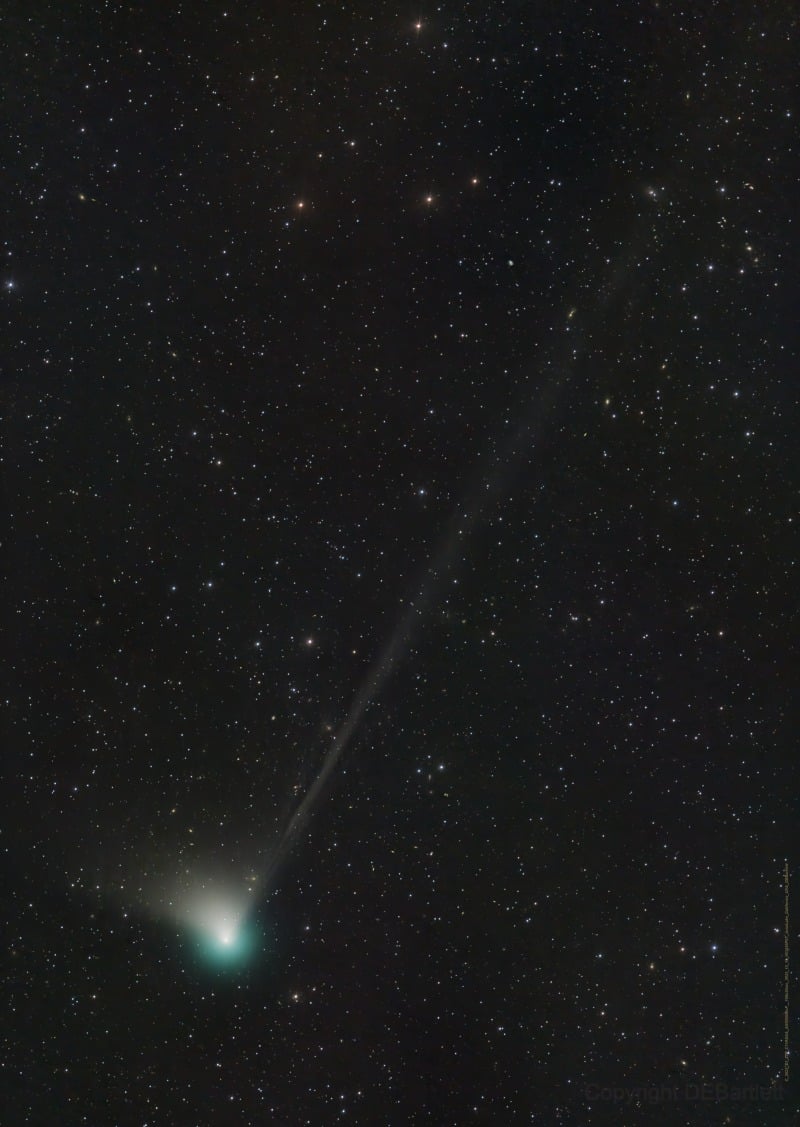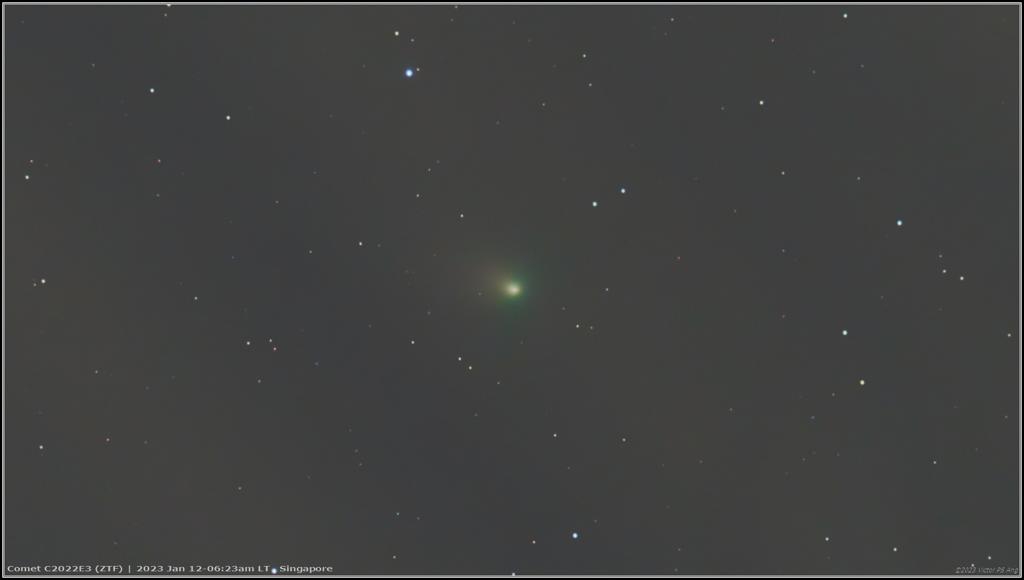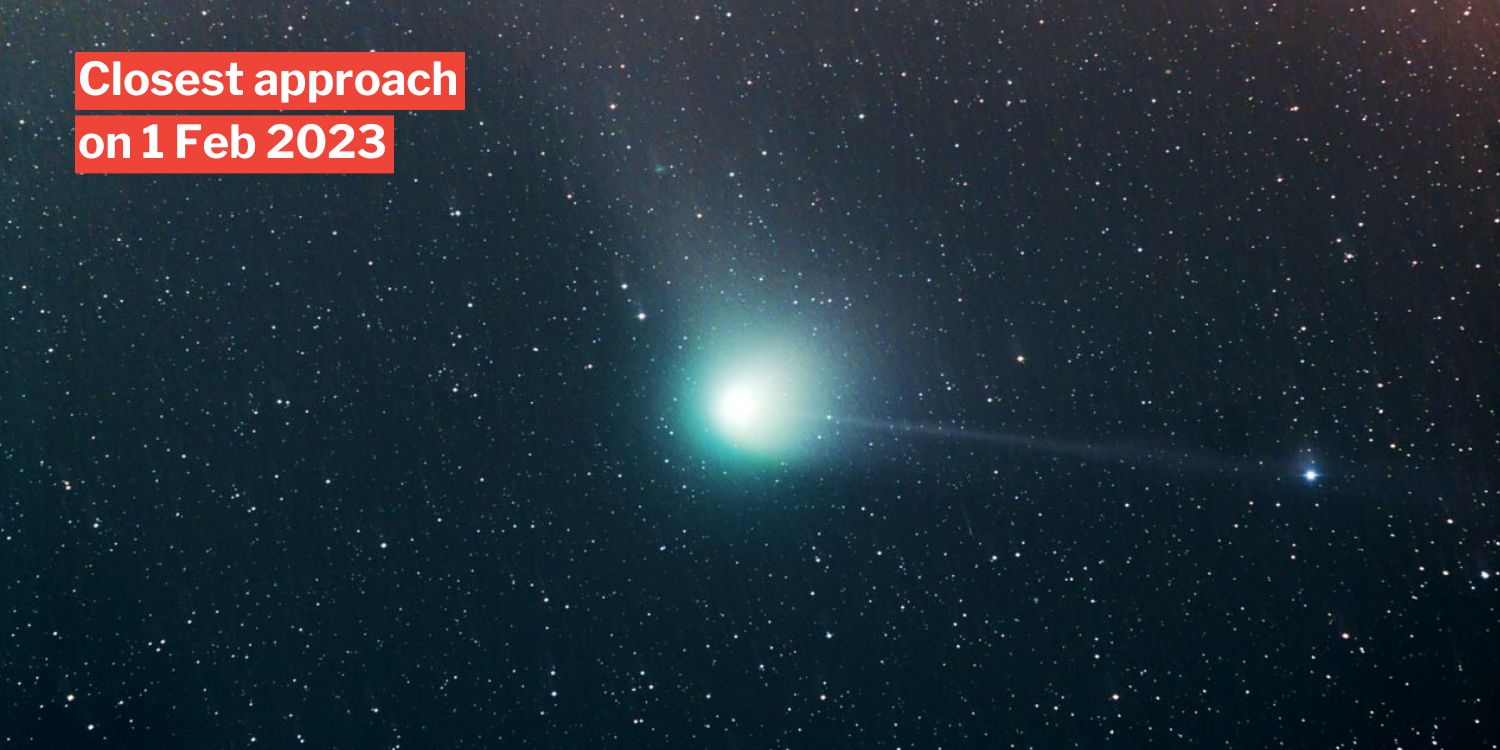Green Comet To Pass Earth For The First Time In 50,000 Years
This week, a green-hued comet, C/2022 E3 (ZTF), will reportedly pass by Earth for the first time in about 50,000 years.

Source: NASA Jet Propulsion Laboratory on Facebook
The comet will come within 42.5 million km of Earth, with a chance of sighting it right here in Singapore.
Experts on the Stargazing Singapore Facebook page estimate that the phenomenon will be closest to Earth on 1 Feb.
Green-hued comet gradually passing Earth
In a Facebook post on 17 Jan, Stargazing Singapore shared that the comet was in our pre-dawn skies.
At the time of posting, they said that the comet would be dim to the naked eye in Singapore’s sky conditions. However, those with a good DSLR/DSO camera may be able to spot it.
They shared a photo of the comet courtesy of Mr Victor Ang from The Astronomical Society of Singapore (TASOS), who managed to capture it at 6.23am on 14 Jan.

Source: Victor Ang via Stargazing Singapore on Facebook
According to Channel NewsAsia (CNA), the comet has actually been “lurking in the night sky for months” and is gradually passing Earth.
This is apparently the first time the comet is passing by in about 50,000 years.
Likely visible in the northeast direction in Singapore
Stargazers in Singapore can count their lucky stars as Stargazer Singapore claims that the comet will be visible from here.
Those who’d like to find it can observe the sky from 5.30am till sunrise. The page recommends using binoculars to view the dim comet, which will be travelling in the northeast direction.
It will apparently be closest to earth on 1 Feb 2023, so brace yourselves early tomorrow morning.
Each year, observatories worldwide only discover a few comets as they trail towards the inner solar system. The cosmic snowballs become more visible as they venture closer to the Sun.
This particular comet last passed Earth at a time when Neanderthals still inhabited Eurasia, and big Ice Age mammals such as mammoths and sabre-toothed cats roamed.
Green comet result of chemical composition
Regarding its particular colour, Reuters explains that the emerald hue reflects the comet’s chemical composition — the result of a clash between sunlight and carbon-based molecules in the comet’s coma.
Since it formed during the solar system’s early formation, the comet could provide valuable insights into the primordial system.
NASA’s James Webb Space Telescope (JWST) will be observing the comet. Those who’d like to see it through their telescope can watch their livestream at 12pm on Thursday (2 Feb).
You may access the livestream via The Virtual Telescope Project’s website or YouTube channel.
Have news you must share? Get in touch with us via email at news@mustsharenews.com.
Featured image adapted from Astronomers of Verde Valley on Facebook.








